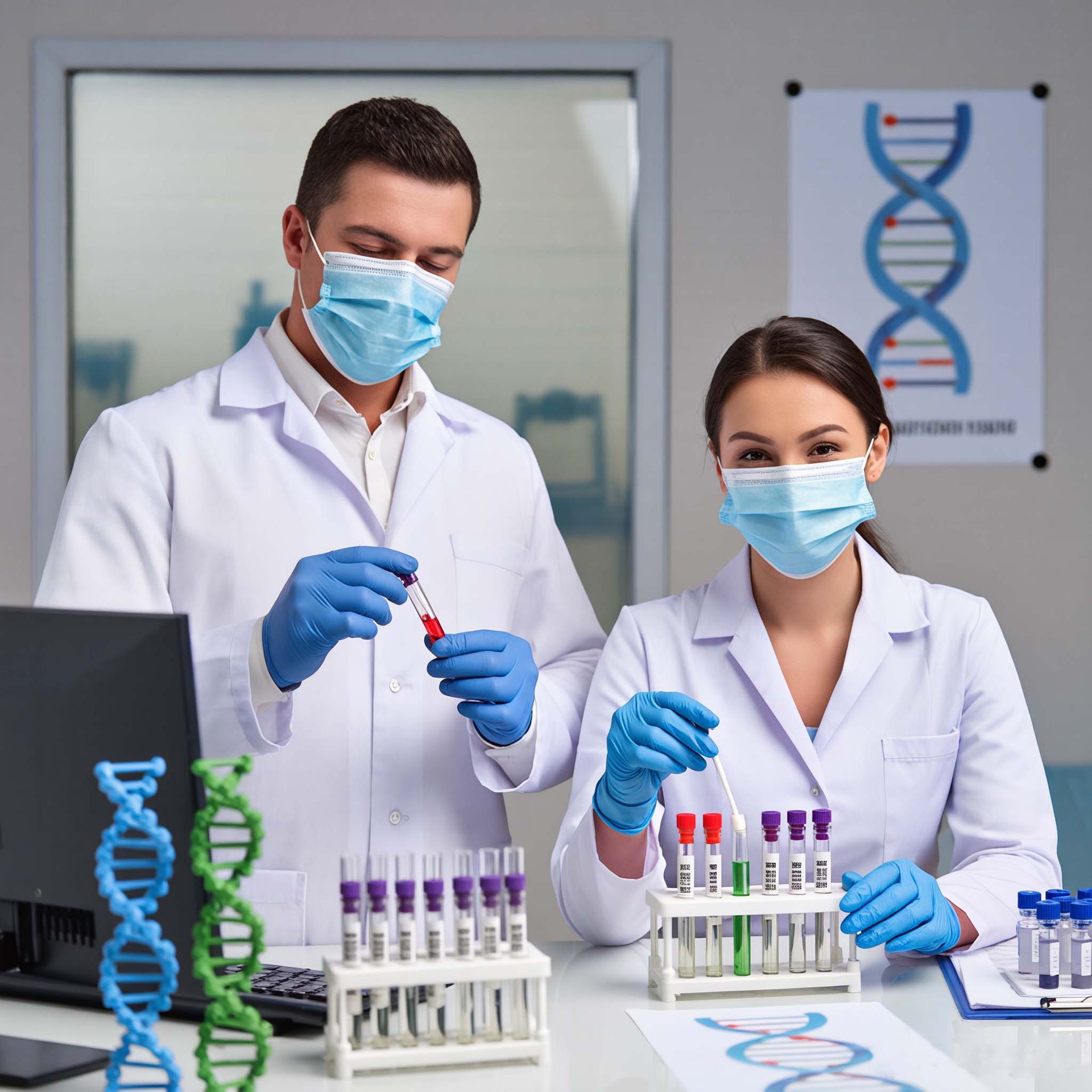19/09/2025

Guide to STD Testing in Hong Kong: Items, Prices, Window Periods, and Accuracy
Introduction
Sexually transmitted diseases (STDs) have become a significant public health issue in Hong Kong. According to data from the Hong Kong Centre for Health Protection, there were over 9,600 new local STD cases in 2021 (based on reported cases only), and the actual number of infections is likely higher. Many STDs show almost no obvious symptoms in the early stages, particularly in women, where the proportion of asymptomatic infections can be as high as 50-80%. Regular STD testing is not only a responsibility towards one's own health but also a sign of respect for one's partner. This article provides a comprehensive overview of STD testing information in Hong Kong to help you make informed decisions.
Why is STD Testing Necessary?
STDs are infections caused by bacteria, viruses, or parasites, primarily transmitted through sexual contact (including vaginal, oral, and anal sex). Many people mistakenly believe that only those with multiple sexual partners need testing, but in reality, any sexually active individual is at risk. This is especially true for middle-to-high-income individuals who frequently travel or are socially active, as they may face a higher risk of infection.
Untreated STDs can lead to serious complications, including infertility, organ damage, neurological issues, and even an increased risk of HIV infection. Early detection and treatment are key to avoiding these consequences.
Common Types of STDs and Testing Methods
Common STDs in Hong Kong can be broadly categorized into bacterial (curable) and viral (manageable but difficult to cure) types:
| STD Type | Recommended Test Item | Sample Type | Window Period |
|---|---|---|---|
| HIV | RNA Quantitative Test | Blood | 7 days |
| 4th Generation Antigen/Antibody Test | Blood | 14 days | |
| Syphilis | RPR/VDRL + TPPA Serological Test | Blood | 14 days |
| Treponema Pallidum DNA Test (PCR) | Swab | 7 days | |
| Gonorrhea | Neisseria Gonorrhoeae DNA Test (PCR) | Urine/Swab | 7 days |
| Chlamydia | Chlamydia Trachomatis DNA Test (PCR) | Urine/Swab | 7 days |
| Genital Herpes | HSV-2 IgG Antibody Test | Blood | 14 days |
| HSV-2 DNA Test (PCR) | Blister Fluid/Ulcer Swab | 7 days | |
| HPV (Human Papillomavirus) | HPV DNA Genotyping Test | Swab | 7 days |
Window Period for STD Testing: Key Concept
The "window period" refers to the time from infection with an STD pathogen (such as a virus or bacteria) to when the body produces enough antibodies or the pathogen reaches detectable levels. If the window period is insufficient, a false negative result may occur, even if the person is actually infected.
Below are the recommended window periods for several major STDs:
- HIV: RNA Nucleic Acid Test (7 days), 4th Generation Antigen/Antibody Test (14 days), 3rd Generation Antibody Test (23-90 days)
- Syphilis: Serological Test (14 days), DNA Test (7 days)
- Gonorrhea/Chlamydia: DNA Test (7 days)
- Ureaplasma/Mycoplasma/Trichomonas Vaginalis: DNA Test (7 days)
- Genital Herpes: Antibody Test (14 days), DNA Test (7 days)
- HPV: DNA Test (7 days)
⚠️ Important Note: If testing is done during the window period, results may be inaccurate. It is recommended to wait an adequate amount of time after high-risk behavior before testing or to follow up with testing as advised by a healthcare professional.
STD Testing Prices - Delis Medical
Testing prices generally vary based on the technology used and the window period. Tests detecting antibodies/antigens are typically cheaper but have longer window periods. Conversely, tests detecting pathogen DNA are more expensive but have shorter window periods. Bacterial culture methods generally take longer to report and have relatively lower sensitivity.
- Comprehensive STD Testing
- Common STD Testing
- Urine STD Testing
- Balanitis/Vaginitis Testing
- Genital Ulcer Testing
- Single STD Item Testing
Accuracy of STD Tests
Sensitivity (True Positive Rate)
Refers to the ability to detect positive results in infected individuals. For example, if a test detects 9 out of 10 infected people as positive, its sensitivity is 90%. Tests with low sensitivity may produce more false negatives, meaning infected individuals are not diagnosed, creating a false sense of security.
Specificity (True Negative Rate)
Refers to the ability to detect negative results in uninfected individuals. For example, if a test detects 9 out of 10 uninfected people as negative, its specificity is 90%. Tests with low specificity may produce more false positives, causing unnecessary worry for uninfected individuals.
| Test Item | Price | Sensitivity | Specificity |
|---|---|---|---|
| HIV Type 1 & 2 p24 Antigen and Antibody | $390 | 100.00% | 99.98% |
| Ultra-Sensitive Extended Coverage HIV RNA PCR (Quantitative) | $1,450 | 97% | 98% |
| Treponema Pallidum (TP) Antibody | $250 | 100.00% | 99.93% |
| Syphilis Serological Test RPR | $150 | N/A | N/A |
| Herpes Type 1 Virus IgG Antibody | $390 | 99.40% | 100% |
| Herpes Type 2 Virus IgG Antibody | $390 | 98.40% | 100% |
| Herpes Type 1 Virus DNA | $690 | N/A | N/A |
| Herpes Type 2 Virus DNA | $690 | N/A | N/A |
| Chlamydia Trachomatis DNA | $690 | 95.41% | 100% |
| Neisseria Gonorrhoeae DNA | $690 | 95.41% | 100% |
| Ureaplasma Urealyticum DNA | $690 | 95.41% | 100% |
Who Should Get STD Testing?
The following groups should consider regular STD testing:
- Sexually active individuals, especially women under 25 and those with multiple sexual partners
- Men who have sex with men (higher risk of infection)
- Pregnant women (to prevent mother-to-child transmission)
- Those who have engaged in unprotected sex
- Individuals with STD symptoms (e.g., genital ulcers, abnormal discharge, painful urination)
- Couples planning to marry or start a new relationship
Recommended frequency: High-risk groups should be screened every 3-6 months; general-risk groups should be screened annually.
How to Choose the Right STD Testing Provider?
When selecting an STD testing provider, consider the following factors:
- Professional Consultation: Choose providers that offer pre- and post-test counseling to help select appropriate tests, understand results, and determine next steps.
- Testing Technology: Prioritize providers offering DNA testing due to shorter window periods and higher sensitivity.
- Report Speed: Private providers typically deliver results faster than government facilities (as quickly as 24 hours).
- Privacy Protection: Private hospitals and clinics generally offer better privacy protection and a more comfortable environment.
STD Treatment and Prevention
Treatment Possibilities
Curable: Bacterial STDs (gonorrhea, syphilis, chlamydia) and parasitic infections (trichomoniasis) can be cured with antibiotics.
Manageable but not curable: Viral infections (HIV, herpes, HPV) require antiviral medications to suppress recurrence.
Preventive Measures
- Safe Sex: Consistently use condoms to reduce infection risk.
- Regular Screening: Test every 6-12 months, with high-risk groups testing every 3 months.
- Vaccination: HPV vaccine (9-valent) and hepatitis B vaccine can effectively prevent infections.
- Partner Treatment: If diagnosed, ensure sexual partners are also tested and treated to avoid reinfection.
Conclusion
STD testing is a crucial part of maintaining sexual and overall health. Different STD testing items and combinations suit individuals with varying needs and budgets. The key is to test regularly, especially after high-risk behavior, and to choose reliable providers and appropriate testing methods. Early detection and treatment not only protect oneself but also demonstrate responsibility towards one's partner.
If you suspect you may have an STD, do not hesitate to schedule a test. It is never too late to protect your health.

